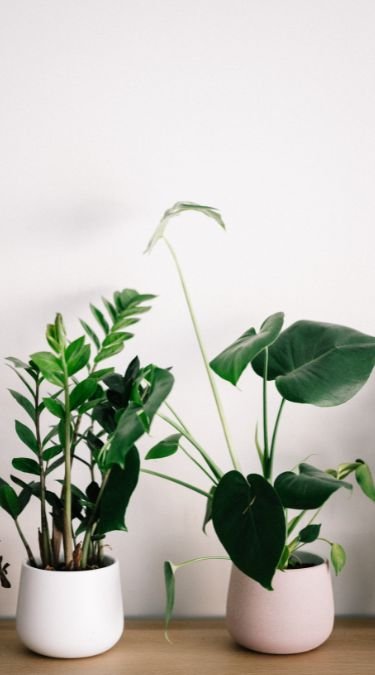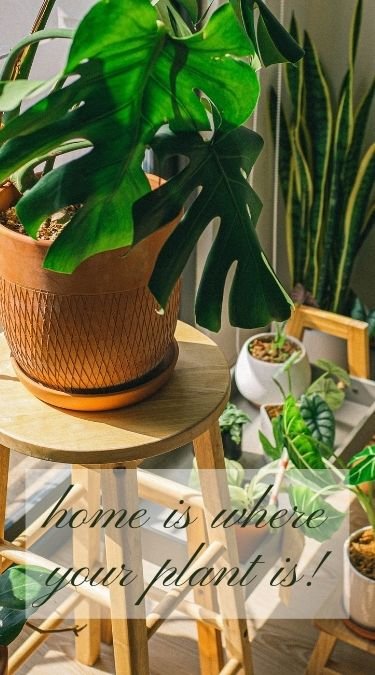Hey there, fellow plant enthusiasts! Are you ready to dive headfirst into the lush and rewarding world of indoor plant care? Whether you’re a seasoned green thumb or a newbie just dipping your toes into the soil, this guide is your golden ticket to plant paradise. We’re about to embark on a journey filled with greenery, sunshine (or artificial light, in this case), and the joys of nurturing your indoor foliage.
Identifying Plant Pests and Diseases: Tips and Insights

Indoor plants don’t just spruce up your living space; they also purify the air, reduce stress, and boost your mood. So, let’s roll up our sleeves, grab our watering cans, and get our hands dirty—figuratively, of course! In this article, we’ll cover everything from selecting the perfect plants to troubleshooting any issues that might crop up. Let’s get started on your indoor plant care adventure!
Choosing the Right Indoor Plants 🌱

Green Friends that Fit Your Space
The first step in indoor plant care is choosing the right plants for your living environment. Not all plants thrive indoors, and their needs can vary significantly. Here’s what to consider:
Light Requirements
Different plants have different lighting needs. Take a look at your space and evaluate the available light. Is it bright and sunny, or do you have limited natural light? Choose plants that match your conditions:
- Low Light: If your space is on the shady side, go for low-light champs like snake plants, pothos, or peace lilies.
- Medium Light: Spaces with moderate light can accommodate plants like spider plants, philodendrons, or rubber trees.
- Bright Light: If you have a sun-soaked room, embrace the sun-loving succulents, cacti, or ficus trees.
Space Constraints
Consider how much space you can allocate to your leafy buddies:
- Floor Space: Tall plants like the fiddle leaf fig or yucca make a statement and fill vertical space.
- Countertops and Shelves: Opt for compact plants like succulents, air plants, or small ferns if you’re short on floor space.
- Hanging Planters: Use ceiling hooks for pothos, spiderettes (baby spider plants), or trailing ivy to maximize space.
Watering Wisdom 💧
Ah, the age-old question: “How much water should I give my plants?” Well, my friends, the answer isn’t one-size-fits-all. It’s more like “one-size-fits-one.” Each plant has its own hydration preferences. Let’s break it down:
Finger Test
An easy way to check if your plant is thirsty is the finger test. Stick your index finger about an inch into the soil. If it feels dry, it’s time for a drink. If it’s still moist, hold off a bit. Remember, overwatering can be just as harmful as underwatering!
Drainage Matters
Ensure your plant pots have drainage holes. This helps excess water escape, preventing root rot. If your pots don’t have holes, consider repotting or adding a layer of gravel at the bottom to improve drainage.
Watering Frequency
Here’s a quick cheat sheet for some popular plants:
- Succulents: Water sparingly, allowing the soil to dry out completely between waterings.
- Ferns: Keep the soil consistently moist but not soggy.
- Cacti: Water infrequently, allowing the soil to dry out almost entirely between waterings.
- Spider Plants: Water moderately, keeping the soil slightly damp.
Remember, it’s always better to underwater than overwater. You can always add a bit more H2O, but you can’t take it back once it’s drenched!
Plant Parenthood 101 🌿

Soil Selection for indoor garden
Choosing the right soil is as crucial as finding the perfect pot. Different plants have different soil needs. Here’s a brief rundown:
- Cacti and Succulents: These desert darlings thrive in well-draining, sandy soil.
- Tropical Plants: Use a peat-based mix that retains moisture without becoming waterlogged.
- Orchids: Orchid bark or sphagnum moss provides the ideal airy environment for these exotic beauties.
Potting Perfection
Once you’ve found the right soil, it’s time to pick the perfect pot. Here’s what to consider:
- Size: Choose a pot that allows room for growth. A pot that’s too large can lead to overwatering.
- Material: Terracotta pots are great for plants that prefer dry soil, as they absorb excess moisture. Plastic pots retain moisture better.
- Drainage: As mentioned earlier, ensure your pots have drainage holes or be prepared to drill them yourself.
Feeding Your Green Babies 🌿
Just like we need food to grow, so do our plants. Here’s how to keep them well-fed:
Fertilizing Frequency
Most plants benefit from fertilization during the growing season (spring and summer). Use a balanced, water-soluble fertilizer every 2-4 weeks. Reduce feeding during the dormant winter months.
Reading the Labels
Always follow the recommended dosage on the fertilizer label. Over-feeding can lead to nutrient buildup in the soil, which can harm your plants.
Feeding Methods
There are different ways to feed your plants:
- Liquid Fertilizer: Dilute and apply directly to the soil during watering.
- Slow-Release Pellets: Mix these into the soil for a gradual nutrient release.
- Foliar Feeding: Spray a diluted fertilizer solution directly onto the plant’s leaves.
Pruning and Propagating ✂️

Pruning is like giving your plants a spa day. It helps them stay healthy and encourages new growth. Here’s how to do it:
Deadheading
Remove dead or yellowing leaves and spent flowers. This keeps your plant looking tidy and redirects energy toward healthy growth.
Pinching
For bushier plants, pinch off the tips of growing stems. This encourages branching and makes your plant fuller.
Propagating
Want more plants without buying new ones? Propagate your existing ones! Many plants can be propagated from cuttings or offsets. Here’s a simple guide:
- Snip a healthy stem or leaf.
- Allow it to dry for a day or two.
- Plant it in a new pot with fresh soil.
- Keep it moist, and watch it grow!
Troubleshooting Tips 🛠️

Yellow Leaves, Brown Tips, and Drooping Stems
Oh no, your plant’s sending out distress signals! Don’t panic; we’ve got solutions:
Overwatering
- Solution: Let the soil dry out between waterings and reduce the amount of water you’re giving your plant.
Underwatering
- Solution: Water your plant thoroughly when the soil is dry to the touch.
Humidity
- Solution: Place a tray of water near your plant or use a humidifier to increase moisture levels.
Pests and Diseases
Nobody likes unwanted visitors, especially when they’re munching on your plants. Here’s how to deal with common pests and diseases:
Mealybugs
- Solution: Dab them with a cotton swab dipped in rubbing alcohol or use insecticidal soap.
Fungus Gnats
- Solution: Let the soil dry out more between waterings and use sticky traps to catch the adults.
Root Rot
- Solution: Repot your plant in well-draining soil and trim away any affected roots.
Leggy Growth
Is your plant stretching for the light like it’s doing a yoga session? Here’s what you can do:
Light
- Solution: Move your plant to a spot with more light or supplement with grow lights.
Frequently Asked Questions (FAQs) 🌿
Q1: Can I use tap water for my plants?
Yes, you can, but be cautious. Tap water may contain chemicals and minerals that can harm your plants over time. Consider using filtered or distilled water if you’re concerned about water quality.
Q2: How often should I repot my indoor plants?
Repotting is usually necessary every 1-2 years, depending on the plant’s growth. Look for signs like roots emerging from the drainage holes or slow growth.
Q3: Do indoor plants need fertilization during the winter months?
Most indoor plants experience slower growth in winter, so reduce fertilization to every 6-8 weeks or skip it altogether during this period.
Q4: Can I keep my indoor plants in a windowless room?
While some low-light plants can survive in windowless rooms with artificial light, it’s not ideal. If possible, place them near a window with indirect sunlight or invest in grow lights.
Q5: How do I get rid of stubborn pests like spider mites?
Spider mites can be tough to eradicate. Try a mixture of water and dish soap to gently wash them off your plant’s leaves. Repeat as needed.
Conclusion
Congratulations, you’ve just earned your diploma in Indoor Plant Care 101! You’re now equipped with the knowledge and skills to create a thriving indoor garden that’ll turn your home into a lush oasis. Remember, every plant has its unique personality and quirks, so pay attention to their needs, and you’ll be rewarded with healthy, happy green companions.
So, go forth and bring the outdoors inside! Give your plants the love and care they deserve, and they’ll repay you with beauty, improved air quality, and a sense of fulfillment. Happy planting, and may your home always be a haven for flourishing foliage! 🌿✨
Pingback: July Birth Flower: A Symbol of Passion and Devotion - Gardener's School
Pingback: Dischidia Hirsuta Red Leaf: A Tropical Beauty Worth Growing!
Pingback: https://gardenersschool.com/ultimate-guide-to-i...
Pingback: The Complete Ficus Care ‘Green Island’ Guide: Growing this Beautiful Indoor Tree -